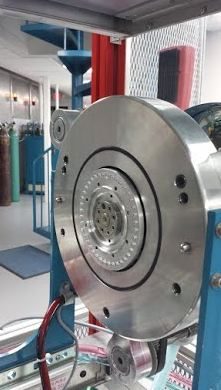Beta Analytic radiocarbon dating lab is ISO/IEC 17025:2017-accredited to perform chemical testing on the following:
Archaeological / Geological Materials and Water
Organic and Carbonate Materials and Water

The practical background detection limit for radiocarbon dating by liquid scintillation counting (LSC) or AMS has long been argued and researched.
Some laboratories will analyze a sample one time and report a finite result, e.g. 48000 +/- 500 or 53000 +/- 2500. Beta Analytic’s own research has shown that such reports on a single analysis can be very misleading. In the past, Beta Analytic has sent graphite splits of the same exact graphite produced from Miocene-aged coal to as many as seven different AMS labs and obtained finite quotes of ages between 42000 to 53000.
These variances in detection limits have also been illuminated in the various International Radiocarbon Intercalibration Studies (TIRI, FIRI, VIRI), where sub-fossil or fossil samples yielded a range of results from finite to greater-than and not always in the right direction.
Beta Analytic has set a real and conservative limit of greater than 43500 BP when the activity of the material is statistically the same as the background. This is a credible number based on the lab’s own internal AMS limits. As such, Beta Analytic does not quote finite ages in excess of 43500 BP. Samples that yield an activity at or below this are reported as “greater than” 43500 BP.
The lab’s instruments are the newest state-of-the art technology designed specifically for radiocarbon measurement. Beta Analytic currently owns multiple accelerator mass spectrometers, each capable of 25 to 30 sample analyses per day. Each instrument has two SNICS (Source of Negative Ions by Cesium Sputtering) ion sources. The redundancy best ensures constant throughput since the SNICS is the major source of downtime in an AMS. The company also has a substantial supply of spare parts, especially those that are prone to failure and/or have extended repair times.
Sequential injection of Carbon-13 and Carbon-12 provides for measurement of Carbon-13/Carbon-12 ratio within the instrument, necessary for accurate total fractionation correction without relying upon relative measures and assumptions (something some older machines are limited to). Sequential injection of Carbon-14, Carbon-13, and Carbon-12 allow for calculation of age both using Carbon-14/Carbon-12 and Carbon-14/Carbon-13 ratios. Simultaneous accumulation of the Carbon-14/Carbon-12, Carbon-14/Carbon-13, and Carbon-13/ Carbon-12 ratios ensure ongoing quality control during the detection; the calculation of each provides three different measures to ensure isotope pathway is stable during the analysis.
In addition to measuring the Carbon-13/ Carbon-12 within the AMS (correction for total fractionation to derive the most accurate conventional radiocarbon age/pMC), the sample’s Carbon-13/ Carbon-12 ratio is also analyzed in an isotope ratio mass spectrometer. Beta Analytic has access to four in-house Thermo-Finnegan Delta Plus Isotope Ratio Mass Spectrometers, each capable of 80 measurements per day. Four machines are on the premises to ensure redundancy and constant throughput.
Multiple parameters are tested for each sample before accepting the data. This includes, but is not limited to, cathode current, extractor current, cesium focus current, high-energy Carbon-14/Carbon-12, high-energy Carbon-14/Carbon-13 ratio, low-energy Carbon-13/ Carbon-12 ratio, low-energy Carbon-12 current, low-energy Carbon-13/ Carbon-12 current, and gated Carbon-14 counts. Once accepted, ratios between and within the Oxalic Acid modern standard are utilized to calculate a fraction of modern value for the unknown.
At least two background measurements are made at the beginning and end of each run to ensure the absence of any contamination between sample wheels. Six modern standards are measured and 4 to 5 known-age QA standards are run in each wheel to ensure accuracy in the results for the unknowns.
Measurement of the Carbon-13/ Carbon-12 ratio allows for correction of the measured Carbon-14 age based on the amount of isotopic fractionation (enrichment or depletion) in the individual sample as compared to the modern standard. If the measurement is not made, one is assumed in the age calculation.
For identified materials, this estimate can be very close to the measured value. However, it is especially important for unidentified plant materials that may contain a mixture of C3 (e.g. typical hardwood trees) and C4 (e.g. corn) pathway plants and CAMS pathway plants (e.g. yucca), which could result in a 250-year error in accuracy without the measurement. It is important for bone samples since it will give insight into the purity of the protein extracted for radiocarbon dating analysis.
More about Beta Analytic:
Page last updated: May 2024